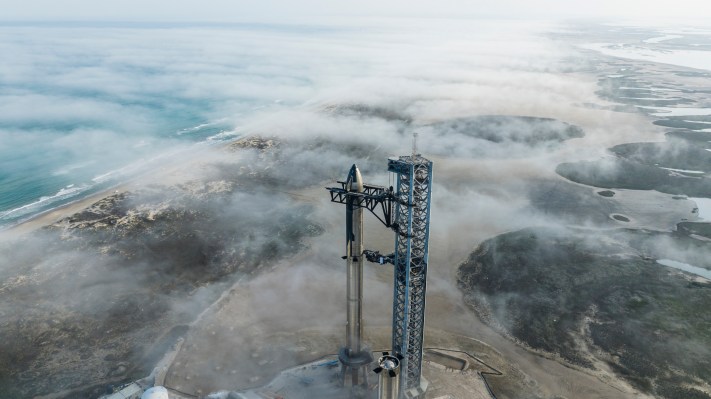In less than 24 hours, SpaceX will attempt to launch Starship to space for the second time. The official launch window opens at 7:00 AM CST on Saturday and lasts for just 20 minutes — and no, that’s not a typo.
SpaceX will start its live webcast tomorrow around 35 minutes prior to liftoff and will be hosting the video on its website and on its social media page on X (SpaceX CEO Elon Musk’s other company).
Here’s a brief rundown of the series of events we’ll see tomorrow morning. Around two hours prior to launch, SpaceX’s flight director will verify the go ahead for propellant loading. First, the Super Heavy booster will be loaded with liquid oxygen and liquid methane, then the upper stage (the upper stage is also called Starship).
Around 20 minutes prior to liftoff, Starship’s Raptor engines — 33 on the booster and six on the upper stage — will begin to chill prior to ignition. Ten seconds before launch, SpaceX will activate its flame deflector, a massive water deluge system that sits beneath the orbital launch mount. That system will flood the base of the rocket with water to absorb noise, deflect some of the vibration and protect the launch infrastructure from the awesome power of the Raptor engines.
Ignition sequence will start at T-3 seconds. Then…in the words of Musk, “excitement guaranteed.”
Standing at nearly 400-feet-tall, Starship is the largest rocket ever built. Already, there’s a lot riding on these tests: Starship is booked to take astronauts to the moon in 2025 (as in, two years away) and eventually crew and cargo to Mars. The first orbital flight test back in April ended prematurely when the two rocket stages failed to separate. SpaceX intentionally detonated the vehicle mid-air over the Gulf of Mexico around four minutes after liftoff after it began to tumble uncontrollably back to Earth. Given the first test results, if SpaceX can even just go a little further — achieve stage separation, or progress even further into the launch — that would be a huge win.
SpaceX has introduced a number of upgrades this time around — including the water deluge system and a new way to execute stage separation called “hot staging,” where Starship’s upper stage will actually ignite to push the booster away. These upgrades will also be put to the test.
The company’s ultimate goal for the flight test is to send the Starship upper stage on a journey almost halfway around the globe and land it in the Pacific Ocean.
